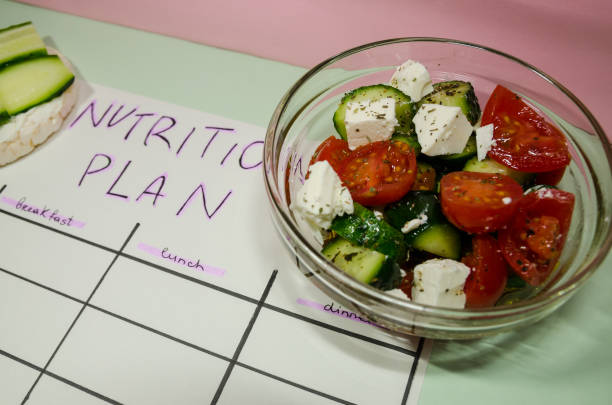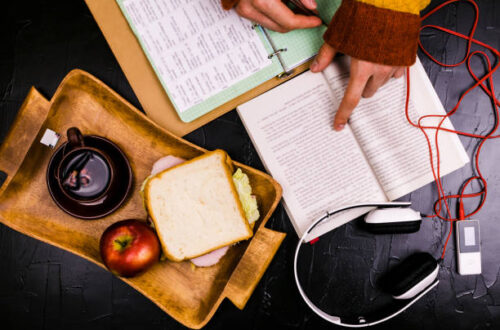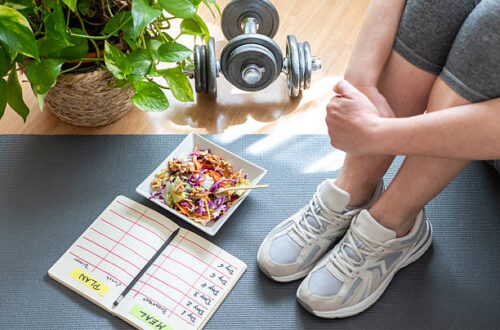Let’s be real for a second. You want to lose weight. You’ve probably typed “how to lose weight fast” into Google more times than you can count. You’re bombarded with conflicting advice—keto, paleo, fasting, no-carb, all-carb… it’s enough to make your head spin. Welcome to a simple, effective, and—most importantly—safe approach to weight loss. This guide is built around a 1500-calorie meal plan. Why 1500 calories? Because for many people, it’s the “sweet spot.” It’s low enough to create the calorie deficit needed for weight loss but high enough to provide the essential energy and nutrients your body needs to thrive. You won’t feel starved, deprived, or miserable.
We’re going to break down everything: the principles behind the plan, a full 7-day sample menu with delicious and easy-to-make meals, and practical tips to help you stick with it for the long haul. This isn’t a crash diet; it’s a blueprint for a healthier relationship with food.
Why a 1500 Calorie Meal Plan Works for Weight Loss
Contents
The science of weight loss is actually quite simple: you need to burn more calories than you consume. This is called a calorie deficit. Think of your body like a car. If you put in less fuel than it uses, it has to tap into its reserve tanks (your stored fat) for energy.
For the average sedentary woman, maintaining weight requires about 2000 calories per day, and for the average man, it’s about 2500. By reducing that intake to 1500 calories, most people will create a gentle, consistent deficit of 500-1000 calories per day.
This is considered a safe rate of weight loss, typically leading to a loss of 1-2 pounds per week. It’s quick enough that you see motivating results, but slow enough that it’s sustainable and less likely to be muscle or water weight.
The Golden Rules for Success on a 1500 Calorie Diet
Before we jump into the food, let’s cover the core principles that make this plan work. It’s not just about counting calories; it’s about making those calories count.
Balance Your Macronutrients (The Big 3)
Every meal should be a balance of protein, healthy fats, and complex carbohydrates.
- Protein is Your Best Friend: It keeps you feeling full and satisfied, helps build and maintain muscle while you lose fat, and gives your metabolism a slight boost. Think chicken breast, fish, eggs, Greek yogurt, lentils, and tofu.
- Embrace Healthy Fats: Fats are not the enemy! Healthy fats from sources like avocado, nuts, seeds, and olive oil are crucial for hormone function, brain health, and helping you feel full.
- Choose Carbs Wisely: Forget the “no-carb” myth. You need carbs for energy. The trick is to choose complex carbs that are high in fiber, like brown rice, quinoa, oats, sweet potatoes, and whole-grain bread. They digest slowly, giving you steady energy without the sugar crash.
Prioritize Whole, Unprocessed Foods
The easiest way to stay within your calorie goal is to eat foods that are as close to their natural state as possible. An apple is a better choice than apple juice. Grilled chicken is better than chicken nuggets. Whole foods are packed with nutrients, fiber, and water, which fill you up on fewer calories.
Hydration is Non-Negotiable
Water is your secret weapon for weight loss. Sometimes when you think you’re hungry, you’re actually just thirsty. Drinking plenty of water (aim for 8-10 glasses a day) helps you feel full, boosts your metabolism, and keeps your energy levels up. Keep a water bottle with you at all times!
Meal Prep Will Save You
Let’s face it, when you’re tired and hungry after a long day, the temptation to order a pizza is real. The single best way to combat this is meal prepping. Spend a couple of hours on the weekend chopping veggies, cooking a batch of quinoa, and grilling some chicken. When healthy, delicious meals are ready to go, making the right choice becomes the easy choice.
Your 7-Day Sample 1500 Calorie Meal Plan
Here it is! A full week of delicious, easy-to-prepare meals that will keep you satisfied and on track. Remember, this is a template. Feel free to swap days or substitute foods with similar calorie counts based on your preferences.
Day 1 (Approx. 1495 calories)
- Breakfast (350 cal): Greek Yogurt Parfait. 1 cup non-fat plain Greek yogurt, 1/2 cup mixed berries, 1 tablespoon of chia seeds, and a drizzle of honey.
- Lunch (450 cal): Quinoa Salad with Chicken. 1 cup cooked quinoa mixed with 4 oz grilled chicken breast (diced), 1/2 cup chopped cucumbers, 1/2 cup cherry tomatoes, and 2 tablespoons of a light vinaigrette dressing.
- Dinner (550 cal): Baked Salmon with Roasted Veggies. 5 oz salmon fillet baked with a squeeze of lemon. Serve with 2 cups of roasted broccoli and bell peppers (tossed in 1 tablespoon of olive oil).
- Snack (145 cal): One medium apple with 1 tablespoon of almond butter.
Day 2 (Approx. 1510 calories)
- Breakfast (380 cal): Avocado Toast with Eggs. 1 slice of whole-grain toast topped with 1/2 mashed avocado and two scrambled eggs.
- Lunch (420 cal): Leftover Salmon and Veggies. Enjoy the delicious leftovers from last night’s dinner!
- Dinner (510 cal): Turkey Chili. 1.5 cups of homemade turkey chili (made with lean ground turkey, beans, tomatoes, and spices). Top with 1/4 avocado and 1 tablespoon of Greek yogurt (instead of sour cream).
- Snack (200 cal): 1/4 cup of raw almonds and a handful of grapes.
Day 3 (Approx. 1480 calories)
- Breakfast (300 cal): Oatmeal Power Bowl. 1/2 cup of rolled oats (cooked with water or unsweetened almond milk), topped with 1/2 sliced banana and 1 tablespoon of chopped walnuts.
- Lunch (450 cal): Large Veggie Salad with Chickpeas. A big bowl of mixed greens, spinach, carrots, and bell peppers, topped with 1 cup of chickpeas and 2 tablespoons of your favorite light dressing.
- Dinner (580 cal): Chicken Stir-fry. 4 oz sliced chicken breast stir-fried with 2 cups of mixed stir-fry vegetables (like snap peas, carrots, and broccoli) in 1 tablespoon of soy sauce and sesame oil. Serve with 1/2 cup of brown rice.
- Snack (150 cal): One small container of non-fat Greek yogurt.
Day 4 (Approx. 1505 calories)
- Breakfast (350 cal): Berry Smoothie. Blend 1 scoop of protein powder, 1 cup of unsweetened almond milk, 1/2 cup of frozen berries, and a handful of spinach.
- Lunch (430 cal): Leftover Turkey Chili. Chili is always better the next day!
- Dinner (525 cal): Spaghetti Squash with Pesto and Shrimp. 1.5 cups of cooked spaghetti squash tossed with 6 oz of grilled shrimp and 2 tablespoons of pesto.
- Snack (200 cal): Hard-boiled egg and a piece of fruit.
Day 5 (Approx. 1490 calories)
- Breakfast (380 cal): Avocado Toast with Eggs. It’s too good not to have twice!
- Lunch (450 cal): Chicken Salad Lettuce Wraps. Mix 4 oz of shredded cooked chicken with 2 tablespoons of Greek yogurt, celery, and onions. Serve in large lettuce cups instead of bread. Have a side of baby carrots.
- Dinner (560 cal): DIY Burrito Bowl. 1/2 cup brown rice topped with 4 oz of lean ground turkey (seasoned with taco seasoning), 1/2 cup black beans, salsa, lettuce, and 1/4 avocado.
- Snack (100 cal): A small pear.
Day 6 (Approx. 1515 calories)
- Breakfast (300 cal): Oatmeal Power Bowl. Just like on Day 3. Consistency helps build habits!
- Lunch (465 cal): Leftover Burrito Bowl. Enjoy the deliciousness all over again.
- Dinner (600 cal): Healthy Pizza Night! Use a whole-wheat tortilla or pita as a crust. Top with 2 tablespoons of tomato sauce, 1/4 cup of low-fat mozzarella cheese, plenty of veggies (mushrooms, onions, peppers), and 3 oz of grilled chicken. Bake until crispy.
- Snack (150 cal): A small bowl of air-popped popcorn.
Day 7 (Approx. 1490 calories)
- Breakfast (350 cal): Greek Yogurt Parfait. A perfect, easy start for a Sunday.
- Lunch (420 cal): Big Tuna Salad. Mix one can of tuna (in water) with 2 tablespoons of Greek yogurt and chopped celery. Serve over a large bed of mixed greens with cherry tomatoes.
- Dinner (570 cal): Sheet Pan Lemon Herb Chicken and Veggies. Toss 4 oz chicken breast and 2 cups of chopped root vegetables (like sweet potatoes and carrots) with 1 tablespoon of olive oil, lemon juice, and herbs. Roast on a single sheet pan for easy cleanup.
- Snack (150 cal): Cottage cheese (1/2 cup) with sliced peaches.
Of course. Here is an additional 600+ words of content, seamlessly integrated into the original article to add more depth, practical advice, and user-centric value. The new sections are designed to address common pitfalls and empower the reader for long-term success.
Meal Prep: Your Sunday Secret Weapon for a Successful Week
Let’s face it, willpower is a finite resource. After a long, stressful day, the mental energy required to decide on a healthy meal, find the ingredients, and cook it from scratch is often nonexistent. This is when we reach for takeout menus or processed foods. Meal prepping is the single most effective strategy to overcome this. By investing a little time on the weekend, you make your entire week easier, cheaper, and infinitely healthier.
Think of it as a gift to your future self. Here’s a simple way to get started:
- Plan and Shop: Look over the 7-day plan. You don’t have to make every single thing. Just pick 3-4 lunches and 3-4 dinners you’ll eat for the week. Make a detailed grocery list based on those meals. Sticking to a list at the store not only keeps you on plan but also saves you money on impulse buys.
- Cook Your Staples (Batch Cooking): You don’t need to cook full meals. Just prepare the components. Set aside 1-2 hours and:
- Cook a big batch of your main carbohydrate: 2-3 cups of brown rice or quinoa.
- Prepare your protein: Grill a pack of chicken breasts, bake a few salmon fillets, or hard-boil half a dozen eggs.
- Chop your veggies: Wash and chop broccoli, bell peppers, onions, and cucumbers. Store them in airtight containers. This makes assembling salads or stir-fries take minutes instead of half an hour.
- Portion It Out: Create “grab-and-go” meals. Assemble 3-4 lunch containers with your cooked quinoa, chicken, and chopped veggies. Now you have a delicious, perfectly portioned meal ready to take to work.
A perfect week of dieting rarely exists in the real world. There will be birthday parties, stressful days, and Friday nights where you just don’t want to cook. Success isn’t about being perfect; it’s about having a plan for these moments.
The Weekend Challenge: Staying on Track Without Missing Out
Weekends can feel like a diet minefield. A more relaxed schedule and social events can easily undo a week of hard work. The key is to have a strategy.
- Plan Your Indulgence: It’s okay to enjoy yourself! Instead of a “cheat weekend,” plan for a single “treat meal.” Decide what it will be, savor every bite, and then get right back on track with your next meal. This prevents one indulgence from spiraling into two days of overeating.
- Be a Menu Detective: If you’re going out to eat, look up the menu online beforehand. Make a healthy choice before you’re in the restaurant, hungry and tempted by less-healthy options.
- Shift Your Focus: Social events are about the people, not just the food. Concentrate on the conversations and the fun you’re having. Eat slowly, and you might find you’re satisfied with less food than you thought.
What to Do When You “Fall Off the Wagon”
So, you ate a whole sleeve of cookies or had a second helping of pasta. First, take a breath. This is not a failure. You did not “ruin” your progress. Weight loss is a long-term journey, and one off-plan meal is just a tiny bump in the road.
The absolute worst thing you can do is say, “Well, I’ve already messed up, so I might as well keep eating junk today.”
The best thing you can do is show yourself some compassion and get right back on track. Don’t skip your next meal to “make up for it.” Don’t punish yourself with extra exercise. Just return to your planned healthy snacks if nothing happened. Consistency over time is what matters, not perfection in a single day.
Making the Plan Your Own
This 7-day guide is a template, not a prison. The ultimate goal is for you to learn the principles of building a healthy, balanced, 1500-calorie day that you genuinely enjoy.
- Mix and Match: Don’t like the lunch for Wednesday? Swap it with the lunch from Saturday. As long as the meals are part of the plan, you can rearrange them however you like.
- Substitute with Favorites: If you hate salmon, don’t eat it! Swap it for another lean protein like cod, shrimp, or chicken breast. If you prefer sweet potatoes to brown rice, make that switch. The key is to substitute with a food that has a similar nutritional profile and calorie count.
- Listen to Your Hunger Cues: Some days you’ll be more active and feel hungrier. It’s okay to have a slightly larger snack or add more protein to your dinner on those days. Other days, you might feel perfectly satisfied with a little less. Learning to listen to your body’s true hunger signals is a skill that will serve you for life.
Beyond the Plan: Tips for Sticking With It
A meal plan is a great tool, but life happens. Here’s how to navigate real-world challenges.
How to Handle Cravings
Don’t forbid your favorite foods! That just makes you want them more. Instead, practice the 80/20 rule. Stick to your plan 80% of the time, and allow for a small, planned indulgence the other 20%. Want a piece of chocolate? Have a small square and savor it. Craving chips? Portion out a small handful and put the bag away.
Eating Out Without Derailing Your Progress
You can still have a social life! When you eat at a restaurant, look for keywords on the menu like “grilled,” “baked,” or “steamed.” Avoid “fried,” “creamy,” or “crispy.” Ask for sauces and dressings on the side so you can control how much you use.
Don’t Forget to Move Your Body
While diet is the biggest factor in weight loss, exercise is key for overall health, boosting your metabolism, and maintaining muscle. You don’t need to spend hours at the gym. A 30-minute brisk walk each day, a fun dance class, or some simple at-home workouts can make a huge difference.
Frequently Asked Questions (FAQs)
Q1: Is this 1500 calorie meal plan suitable for both men and women?
For most women, 1500 calories is a great target for weight loss. For many men, 1500 calories might be too low, leading to excessive hunger and fatigue. Men may want to start at around 1800-2000 calories by adding slightly larger portions of protein and healthy fats to these meals.
Q2: What if I feel hungry all the time?
If you’re genuinely hungry (not just bored!), your body is talking to you. First, make sure you’re drinking enough water. Second, check that you’re getting enough protein and fiber, as they are key for satiety. You can add more non-starchy vegetables (like leafy greens, broccoli, cucumbers) to any meal, as they are very low in calories but high in volume.
Q3: How much weight can I really expect to lose?
A safe and sustainable rate of weight loss is 1 to 2 pounds per week. While some people might see a bigger drop in the first week (often due to water weight), consistency is what matters. This is a marathon, not a sprint!
Q4: Can I follow this plan if I’m vegetarian or vegan?
Absolutely! This plan is easily adaptable. Simply swap the animal proteins for plant-based options. For example:
- Replace chicken/fish with tofu, tempeh, or seitan.
- Replace ground meat with lentils or a mix of beans.
- Use plant-based protein powder in smoothies and plant-based yogurt.





